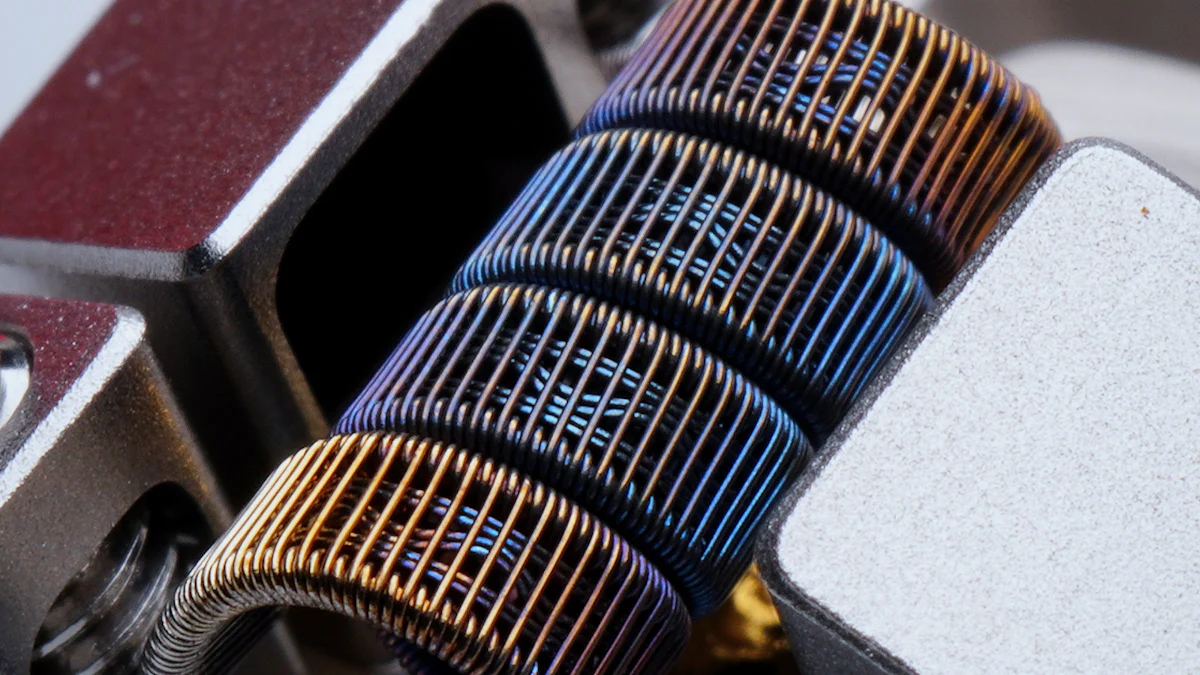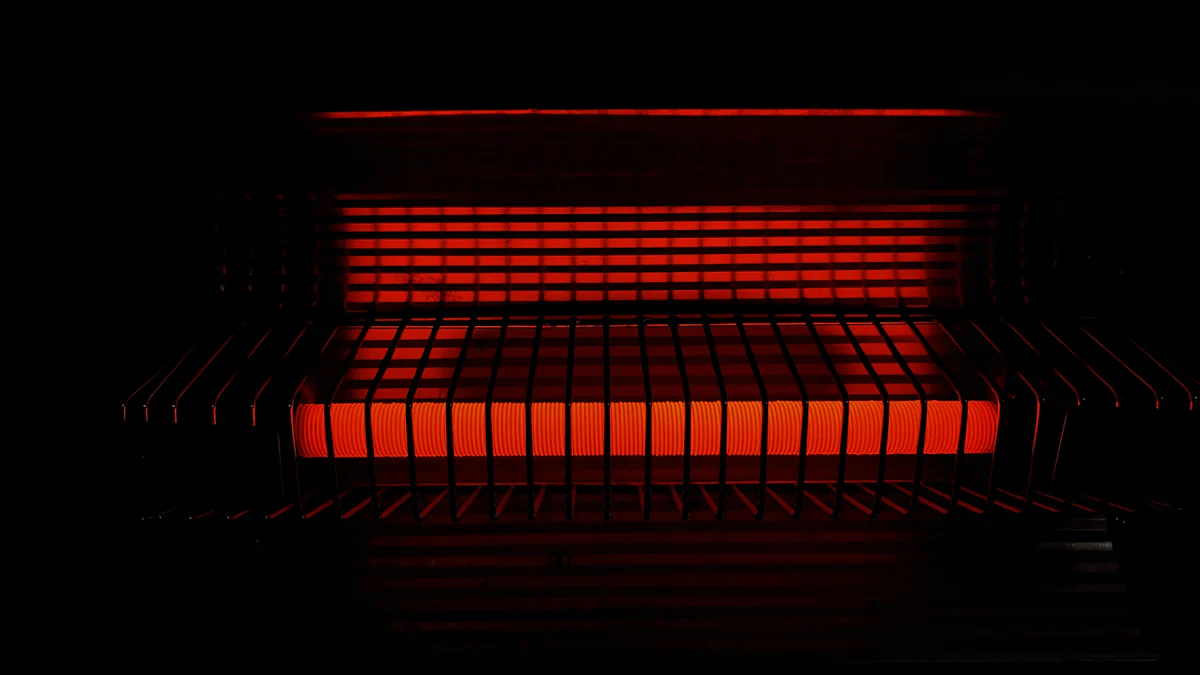
News

Induction heating coil machines use electromagnetic induction to generate heat for industrial processes. These machines provide precise and contactless heating, making them ideal for applications requiring accuracy. Industries like automotive, aerospace, and electronics rely on induction heating for tasks such as brazing, soldering, and heat treatment. This technology ensures efficiency and enhances productivity across various sectors.
The evolution of induction heating began with Michael Faraday's discovery of electromagnetic induction in 1831. By the 20th century, engineers used this principle to melt steel, and advancements during WWII expanded its applications. Today, induction heating machines utilize high-frequency systems for diverse industrial needs.
Key Takeaways
Induction heating machines use magnets to heat things fast and accurately.
They save energy by turning 90% of power into heat, helping industries save money.
These machines are safer since they avoid fire risks and are better for the environment.
How Induction Heating Coil Machines Work
The Principle of Electromagnetic Induction
Induction heating relies on the principle of electromagnetic induction. When you pass an electric current through a coil, it generates a magnetic field around it. This magnetic field induces an electric current in nearby conductive materials, such as metals. The induced current flows through the material, creating resistance, which produces heat. The amount of heat depends on the coil's design and the strength of the current. This process allows you to heat materials quickly and precisely without direct contact.
The Role of the Coil in Generating Heat
The induction coil plays a critical role in the heating process. It transfers energy by creating an alternating electromagnetic field. This field induces a current in the workpiece, which generates heat. The coil's design directly impacts the efficiency of heat generation. For example, a well-designed coil ensures uniform heating and faster processing times. Poorly designed coils, however, can lead to uneven heating and lower-quality results. Materials like copper tubing are commonly used for coils due to their high conductivity and efficiency.
Key Components of an Induction Heating coil Machine
An induction heating machine consists of several essential components. The power supply generates an alternating current, which is necessary for creating the electromagnetic field. Capacitors store electrical energy and help tune the system for optimal performance. The induction coil, made from materials like copper or brass, is responsible for transferring energy to the workpiece. Together, these components form an efficient induction heating system that can handle various industrial applications, from metalworking to electronics manufacturing.
Benefits of Induction Heating Machines
Energy Efficiency and Cost Savings
Induction heating machines offer significant energy savings compared to traditional heating methods. These machines convert up to 90% of the energy directly into heat, minimizing energy loss. In contrast, gas burners achieve only 40% efficiency, with much of the energy wasted as heat escapes into the surroundings. By using induction heating, you can reduce overall energy consumption by 30%. For example, one metal heat treatment plant reported a 25% to 30% cost savings per ton, with a payback period of less than 1.25 years. Additionally, switching to induction heating can lower annual operating costs dramatically. One customer reduced costs from $10,000 to just $1,000 while cutting heating time from 70 minutes to 45 seconds. These savings make induction heating technology a cost-effective solution for industrial applications.
Precision and Control in Heating Processes
Induction heating provides unmatched precision and control. You can adjust the power, frequency, and duration of the electromagnetic field to achieve accurate temperature profiles. This ensures uniform heating and consistent quality, which is essential for processes like induction hardening or brazing. Unlike traditional methods, induction heating systems allow you to repeat the same process with minimal variation, improving product reliability. This level of control also reduces waste, as materials are heated only to the required temperature, avoiding overheating or damage.
Safety and Environmental Advantages
Induction heating machines enhance workplace safety and reduce environmental impact. They operate without combustion, eliminating risks associated with gas leaks or open flames. This makes them safer for environments with flammable materials. Additionally, there is no direct contact with heating elements, minimizing the risk of burns or accidents. From an environmental perspective, induction heating produces minimal emissions and avoids releasing harmful pollutants. Compared to fossil fuel-based methods, it contributes to a lower carbon footprint. For example, induction heating systems achieve up to 90% energy efficiency, while fossil fuels typically perform at lower levels. By adopting induction heating coil machines, you can create a cleaner, safer, and more sustainable industrial environment.
Industrial Applications of Induction Heating Coil Machines

Induction heating coil machines have revolutionized various industries by offering efficient and precise heating solutions. Their versatility makes them indispensable in numerous industrial applications.
Automotive Industry (e.g., Hardening, Brazing, and Welding)
In the automotive sector, induction heating machines play a vital role in enhancing production efficiency and product quality. You can use these machines for processes like shrink fitting, aluminum brazing, and annealing. They are also ideal for metal and surface hardening, forging, and induction soldering. Preheating for welding and heat treatment are other common uses of induction heating machines in this industry. These applications ensure durability and reliability in automotive components, such as gears, shafts, and bearings.
Aerospace Industry (e.g., Heat Treatment of Components)
The aerospace industry demands precision and consistency, and induction heating meets these requirements effectively. Induction heating machines convert up to 90% of electrical energy into heat, reducing energy consumption significantly. You can target specific areas of a workpiece, preventing unnecessary heating and maintaining tight tolerances. This precision minimizes deformation and scrap rates while extending the life of components. Processes like induction hardening and heat treatment benefit from rapid heating, which reduces production cycle times. Additionally, the clean and environmentally friendly nature of induction heating technology aligns with the industry's sustainability goals.
Manufacturing and Metalworking (e.g., Forging, Annealing, and Melting)
Manufacturing and metalworking heavily rely on induction heating equipment for processes like forging, annealing, and induction melting. These machines offer energy efficiency, reducing costs and environmental impact. You can achieve faster heating, cutting cycle times from hours to minutes. Induction heating systems provide precise temperature control, ensuring consistent quality and minimizing waste. For example, induction melting allows you to refine metals while maintaining their structural integrity. The absence of open flames also enhances workplace safety, making induction heating a preferred choice in these industries.
Electronics and Medical Devices (e.g., Soldering, Crystal Growing, and Sterilization)
In electronics, induction heating is essential for applications like crystal growing and induction soldering. Precise temperature control and rapid heating ensure high-quality results. For instance, heating a graphite susceptor with an induction coil enables conductive heating without chemical reactions, ideal for crystal growing. In the medical field, induction heating machines are used for sterilizing instruments, catheter tipping, and annealing medical wires. You can also use them for brazing and soldering small contacts in medical devices. These applications highlight the versatility and efficiency of induction heating coil machines in advanced industries.
Limitations and Considerations
Material Compatibility and Limitations
Induction heating works best with conductive materials like metals. However, it struggles with non-conductive materials such as plastics. Certain materials may also be unsuitable due to their physical properties, which can limit the range of applications. For example, if you work with materials that do not respond well to electromagnetic fields, induction heating may not be the right choice. This limitation requires careful consideration when selecting an induction heating system for your needs.
Initial Investment Costs
The initial cost of induction heating equipment can be a significant barrier, especially for small-scale operations. Advanced systems often cost more than traditional heating methods. The equipment, including power supplies and coils, requires a higher upfront investment. Integrating these systems into existing production lines can also be complex, requiring specialized expertise. For smaller businesses, justifying this expense may be challenging unless the long-term benefits outweigh the initial costs. Despite the high investment, induction heating technology offers faster heating times and lower energy consumption, which can lead to substantial savings over time.
Maintenance and Operational Requirements
Maintaining an induction heating system involves specific challenges. The equipment requires regular upkeep to ensure optimal performance. Cooling systems, for instance, play a critical role in preventing overheating and maintaining efficiency. You may also need to train your staff to operate and maintain the system effectively. While induction heating equipment is durable and experiences less wear and tear compared to traditional methods, it still demands attention to avoid unexpected downtime. Additionally, interference with nearby electronic devices or medical equipment can occur, which may require additional precautions in certain environments.
Induction heating coil machines revolutionize industrial heating with their efficiency, precision, and safety. They operate on principles like electromagnetic induction and the skin effect, ensuring rapid and targeted heating. Industries benefit from their energy efficiency, reduced carbon footprint, and consistent quality control. You can explore their applications in automotive, aerospace, and electronics to enhance productivity. Emerging trends, such as intelligent control systems, promise even greater flexibility and sustainability. By adopting induction technology, you can align with modern demands for eco-friendly and efficient processes.
FAQ
What is the lifespan of an induction heating coil machine?
The lifespan depends on usage and maintenance. With proper care, these machines can last over 10 years, making them a durable choice for industrial heating.
Can induction heating work with non-metal materials?
Induction heating works best with metals. Non-conductive materials like plastics cannot generate heat directly but can be heated indirectly using conductive susceptor materials.
How do you maintain an induction heating system?
Regularly clean the coil and cooling system. Inspect components for wear and tear. Follow the manufacturer's guidelines to ensure optimal performance and prevent unexpected downtime.
Please give us a message